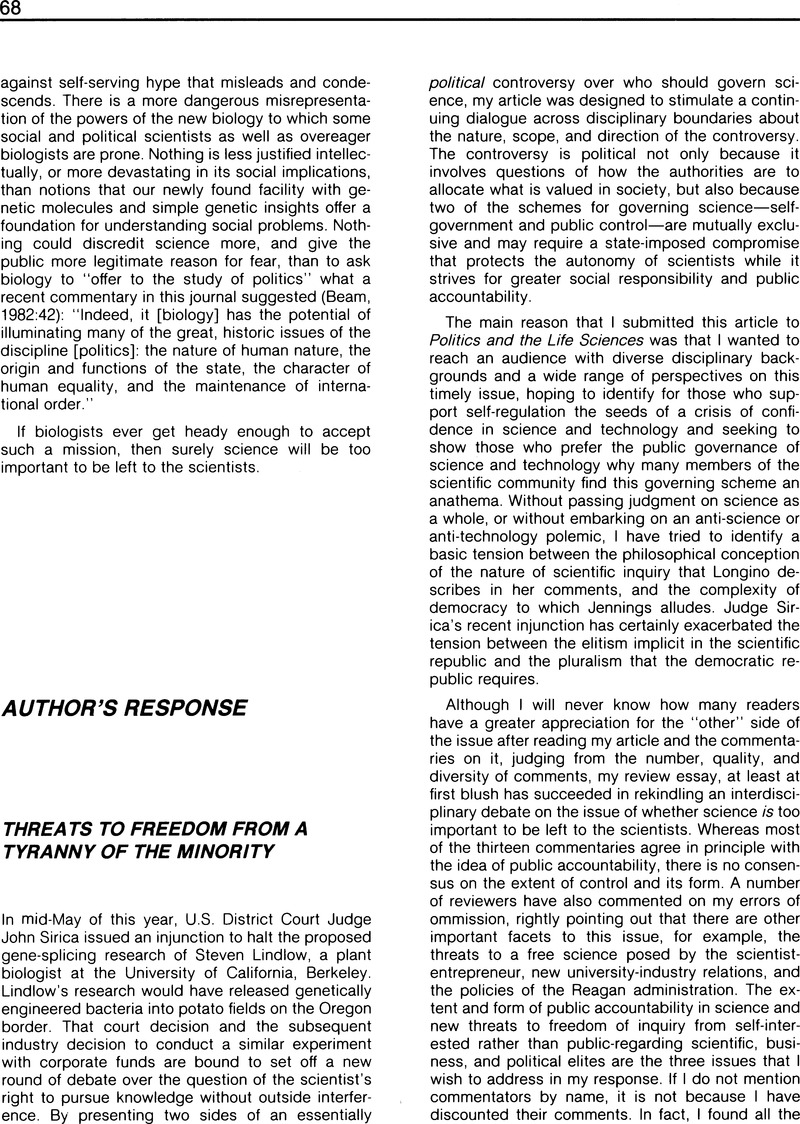Crossref Citations
This article has been cited by the following publications. This list is generated based on data provided by Crossref.
Peterson, Steven A.
and
Somit, Albert
1985.
Biopolitics in 1984.
Politics and the Life Sciences,
Vol. 4,
Issue. 1,
p.
67.
Picarella, Lucia
2024.
Intersections in the digital society: cancel culture, fake news, and contemporary public discourse.
Frontiers in Sociology,
Vol. 9,
Issue. ,



